Packrafts turn almost too easily! A lot of less experienced paddlers allow their packrafts to turn too early and thus they get caught in the confused water around eddy lines. As a result the boat spins on the spot, edges get grabbed, whilst balance, control and speed are lost. Instead you need to counteract the packrafts natural desire to turn on the spot and aim to fully get across the eddy line before actually turning. Doing so allows you to get into the cleaner and more predictable water on the other side which will give you more control and improve stability.
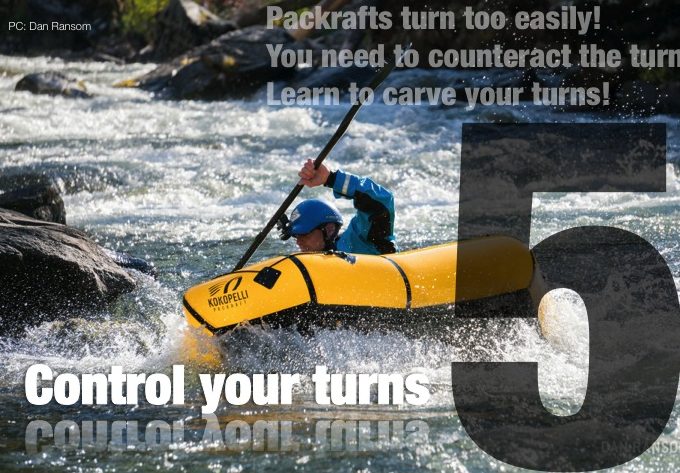
The advanced method for controlling your turns is to learn to carve them. Yes, some packrafts can carve! A carved turn can be used to turn ridiculously quickly in a tight spot or to drive yourself deep into or out of an eddy. Regardless of whether you are an advanced paddler looking to carve or a complete novice looking to simply stay upright the same concepts apply.
Consider the following elements in this order to learn to control your turns:
Position, Angle, Speed, Edge, Eyes, Stroke(s) = P.A.S.E.E.S
For those just learning to efficiently cross an eddyline simply focus on the first three elements (P.A.S) until you have mastered them.
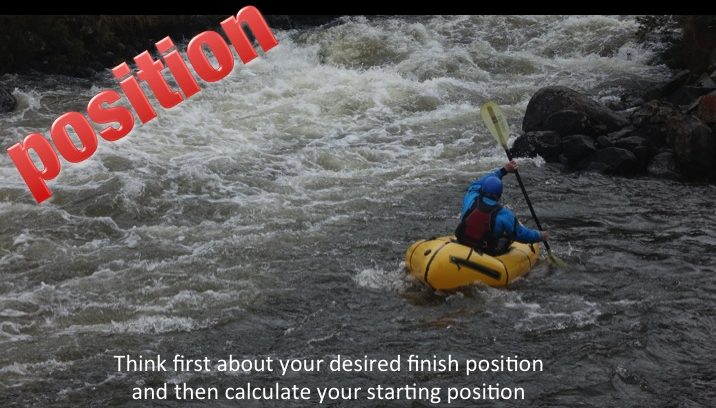
POSITION – Work out where you want to ultimately end up. Do you want to end up deep in an eddy or the main current or do you want to turn tightly immediately after crossing the eddyline?
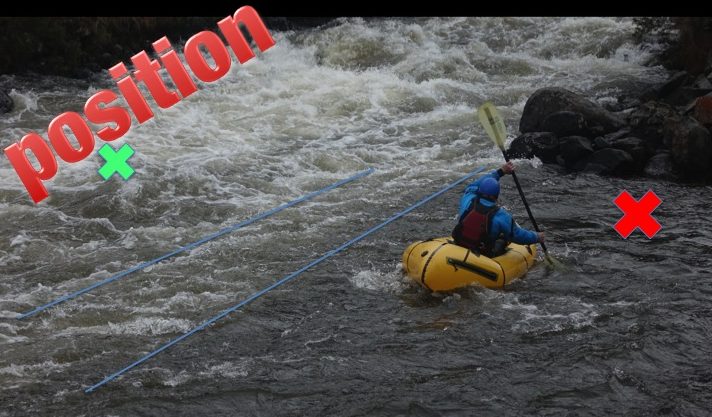
Then, consider where you initially need to position yourself on the water in order to achieve this. Generally aim to position yourself so that you have space to build cross current momentum that will drive you towards your end goal (green X). For further explanation on building and using this momentum and where to position yourself, refer back to Tip #3. It should be obvious though that, on this fast flowing river, if you start at the red X and head toward the middle of the river, the momentum of the river will drive you downstream and you will miss your goal.
 ANGLE – Aim to cross the eddy line at an angle of around 45 degrees. If it’s a slow current you can choose to open the angle up slightly whilst if it’s a super-fast current you may want to reduce your angle of entry – depending on how quickly you want to turn and where you aim to end up. If you are ferry gliding into an eddy then open up your angle of entry just prior to crossing the eddy line as otherwise you may not have sufficient angle to drive across it.
ANGLE – Aim to cross the eddy line at an angle of around 45 degrees. If it’s a slow current you can choose to open the angle up slightly whilst if it’s a super-fast current you may want to reduce your angle of entry – depending on how quickly you want to turn and where you aim to end up. If you are ferry gliding into an eddy then open up your angle of entry just prior to crossing the eddy line as otherwise you may not have sufficient angle to drive across it.
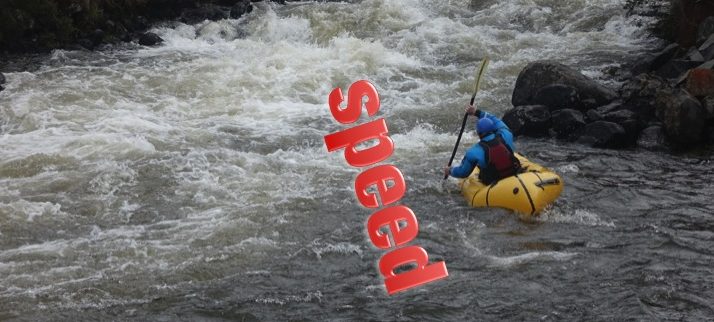
SPEED – Think about how much speed you need to cross the eddy line. The wider and stronger the eddy line the more speed is needed to cross it. When followed up with edging and the appropriate stroke you can quickly turn forward speed into a carved turn that will have you turning on a dime. At other times you may want to enter with minimal speed, such as when ferry gliding or setting yourself up to surf a wave.
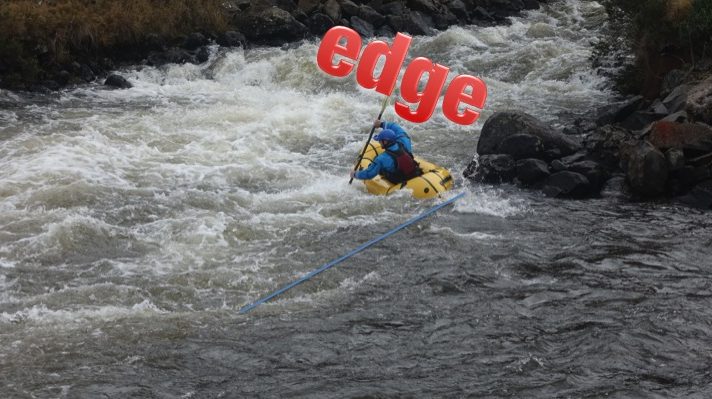
EDGE – If you always paddle your packraft‘s hull flat to the water then you are missing out. Many packrafters get away without edging their boats but putting the time into learning this skill will change your paddling completely. Edging allows your boat to ‘grab’ the water. When moving with speed into an eddy, or into the main current, the more you edge the packraft the more quickly you will turn. This is a big advantage if you are trying to catch tiny eddies on a fast flowing river. Edging also reduces the chance of catching your edge and of ‘tripping up’ and losing your balance. You can only edge though if you are connected to your boat (see Tip #4) and it is a skill that takes practice. Failure to edge in a packraft can result in you ‘drifting’ or ‘sliding’ straight through a mid-river eddy and out the other side. Master edging and you will be well on your way to carving your turns.
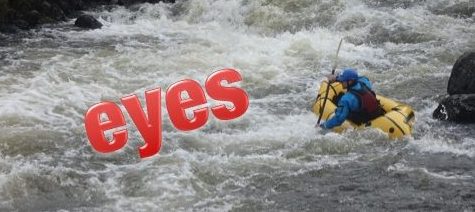
EYES – Turn your head to look where you want to go and your boat will follow. As soon as you have crossed the eddyline, either when exiting or entering an eddy, look over your shoulder at the exact point where you want to end up. This will help initiate the turn, set the angle of your trajectory, as well as maintain the appropriate edging of your boat. Avoid spending time looking directly at where you do not want to be, such as large holes, as doing so will likely result in you ending up there. Depending on the speed that you are moving, the width of the eddyline and how quickly you want to turn, engaging your eyes may need to happen at almost the same time as edging your boat.
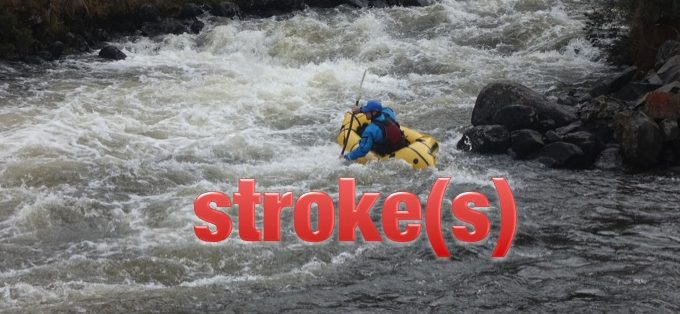
STROKES – If you get the timing correct on all of the above actions and you use the water to your advantage then you may not even require any further strokes to finish the turn. However, using effective strokes at the right times will set you up for success and will also help to stabilise you and to set you up for your next move. The right stroke or combination allows you to turn very quickly or to slow down the turn if required. If you want to do a wide turn and get deep into a large eddy or the main current then try 2 or 3 forward strokes but only on the inside of the turn. Although this seems counter-intuitive, when combined with aggressive edging, it works incredibly well. Alternatively if you want to try and turn quickly, almost on the spot, then use a bow rudder to ‘catch’ the water. There are also other stroke combinations that will produce decent turns but these two techniques will enable you to handle most situations.
Okay, I know P.A.S.E.E.S. is confusing…Previously on packrafting courses I have used PASSED which was a bit more obvious and easier to remember. Various other instructors have used a variety of similar acronyms. It is true that PASEES does not actually make an acronym however it does describe the priority of elements that paddlers need to think about. These days I get paddlers to focus on PAS then once they are comfortable with this we move on to the EES.